The Megalithic House was the last of the sites to visit in this area. It was preserved within a protective building and is an example of architecture from 900 - 1300. Megaliths (literally 'large stones') have been found at many other sites in this area as well, where they were interspersed with smaller, more finished stones.
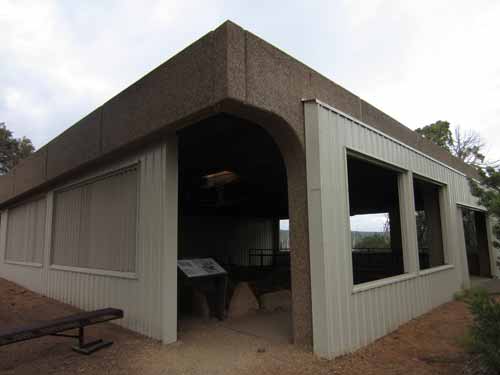



Those are indeed some big, heavy rocks!
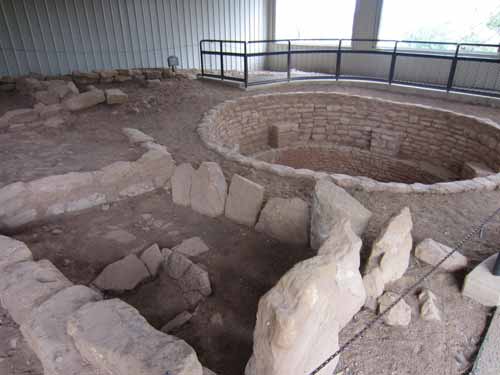
On our way driving out, we passed by the turkey family again.

Coming into the road...

... to get a drink of rain water.


The little ones weren't far away.
It started to rain as we made our way down to the Cliff Palace... and by the time we got there, it was pouring!

A deer had also stopped in the street to drink from a puddle.
We gathered at the overlook and waited for our ranger. Eventually PT (yup, that was his name) showed... along with 50 other people! He said tours could be as large as 80! We all stood there in the pouring rain while he gave us a bit of history of the place.

Photo from 1891
Cliff Palace is Mesa Verde's largest cliff dwelling. The one-hour tour involved climbing three ladders and walking 1/4 mile. Sounds good... but it will be interesting to see how slick the rock gets with all this water!
Again we heard the same history story I've been subjecting you for the past couple of pages. We did learn, however, that there are 21 tribes that descended from the Ancestral Puebloans. PT tried to name them all but couldn't remember one of them. Still quite impressive!
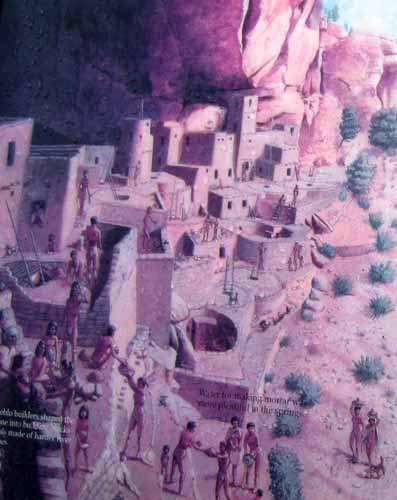
Cliff Palace as it might have looked back then

Cliff Palace was started in 1200. The built for 75 years... then just left.
He went over some of the reasons people might have moved into the cliffs... protection from the weather, food storage, water (there are no rivers in the park, only seep springs), more room to grow crops on the mesa.

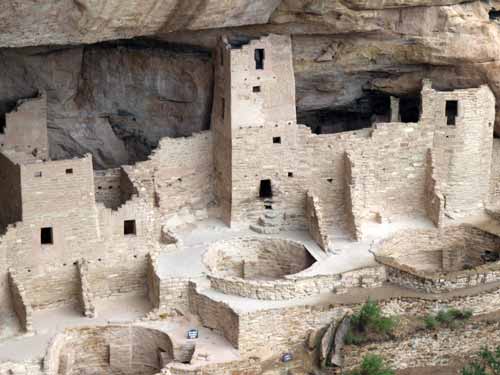
It had 150 rooms, square and round towers, and 22 kivas.



Here is an example of a T-shaped doorway. It is thought it might have made it easier to get through when carrying things one one's shoulders.


Another cliff dwelling across the valley

In total, there were around 600 cliff dwellings and 5,200 mesa top sites (most of which are gone from the weather).
Miraculously, as soon as he opened the gate for us to begin heading down the cliff, the torrential rains completely stopped! We made our way down 130 feet to the alcove.

Things were wet, but fortunately not slippery.



The reward!

We sat for a bit, overlooking the impressive cliff building, while PT told us more history and stories.
By the year 1200, there were 10,000 - 30,000 people living in this large area. Also, in the mid to late 1100's, a huge drought in Chaco brought many people here as well (hence the change in architectural style). Being such talented farmers, the Puebloans were able to support more and more people. They were now living with many different clans. In general, it was each's group's grandmother that would make the decisions.
Some groups had been living in the cliff alcoves for a while, but the mass move came in the 1200's. 80 - 300 people lived here in the Cliff Palace.
From the previous excavations of the burial sites, we learned that in the 1200's, men were 5'4" and women 5"2'. Life expectancy actually decreased! There was evidence of disease and parasites in their stool. When they brought their turkeys down here, they got pinworms because the animals lived too close to the water supply. Originally, 25% of teeth had cavities, but now it was 85%. Anemia was increasing and there was a lack of protein.
Why? What was going on? Well, for one... corn. It was the biggest, easiest and cheapest food. Also, with so many people in the area, most of the big game (such as deer, bison and bighorn sheep) had left. Their diet was no longer diverse. It was very likely they began suffering from mental health problems as a result as well. By 1280, they knew they must leave.
So... corn, poisoned water, digestive problems, disease, rotting teeth, and possible mental issues... wouldn't you leave too? Back then, they could. There were still other places to go. Nowadays, while facing amazingly the same kind of issues from overpopulation and a poor diet, we have no place left to go. Our only choice is to change our society.
But how do you move tens of thousands of people through the desert? Where do you go? Odds are they had to rely on faith, traditions, knowledge and leadership.
We then made our way along the front of the structure. We couldn't go in because it was unstable. Other cliff dwellings are built on solid rock; this is too, but only in the back. It rests merely on dirt in the front. White-throated Swifts twittered throughout the alcove.






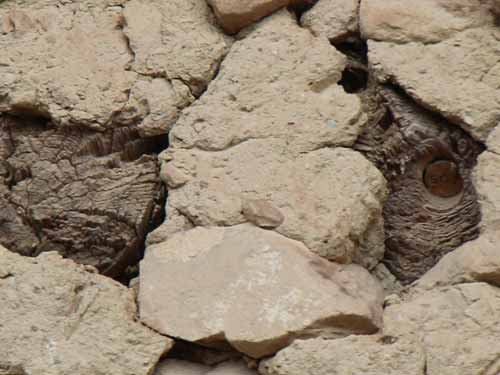
Each piece of wood seemed to have been given a number marker. Tree ring dating is called dendrochronology.

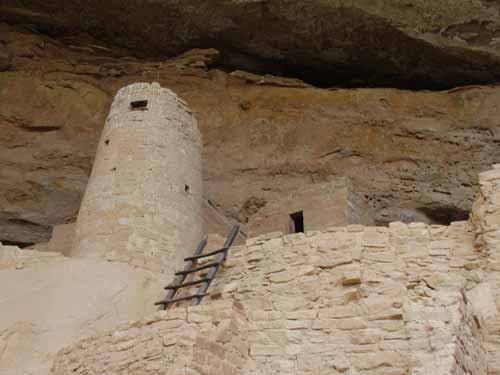

As we reach the far end, another tour group has already taken our original place.
Once at the far end, we went up to a higher level to look at a couple kivas and some artwork at the top of a tower. Again we got to hear more interesting stories.



PT tells his stories.
We already know that kivas had a very thick roof and could support the plaza above. 'Kiva' is the Hopi word for 'room underneath'. It stayed warm in winter and cool in summer. Smoke from the fire pit would come out of the entrance (hole) directly overhead.
'Sipapu' means 'place of emergence'. According to a story from the Hopi, there are four worlds. We are currently in the fourth. They are kind of like parallel universes... connected by this sipapu. This is actually only a representation of the real one, which is a lake somewhere. In the story, Tawa (the creator or sun spirit) sends a flood to destroy the bad third world. But the Spider Grandmother comes down and teaches the people how to build reed rafts. As the water gets high, they find the highest last piece of dry land. Spider Grandmother then tells them to pull the boats apart and plant the reeds in the sand. They do, and the reeds grow. The people climb up them, past the clouds and stars. Eventually they climb out of a lake through the sipapu into the fourth world. They were told they could live here but they must make six large migrations over time.
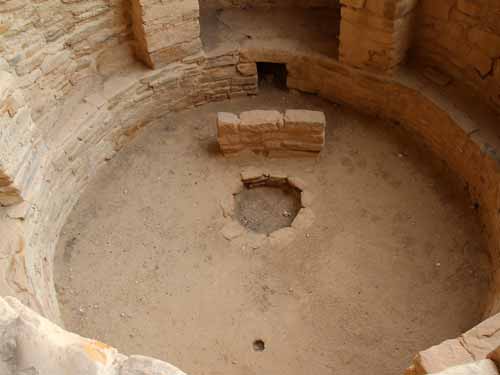
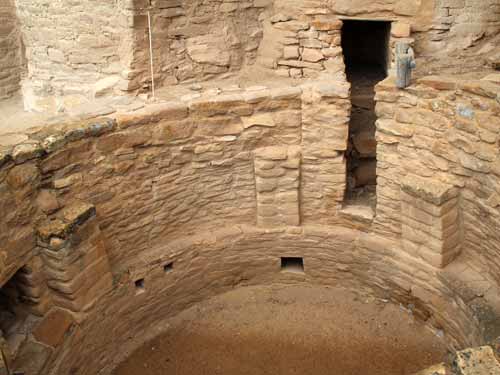
A back passageway leading into the kiva


Looking into the tower with its artwork

More than just simply pictographs




